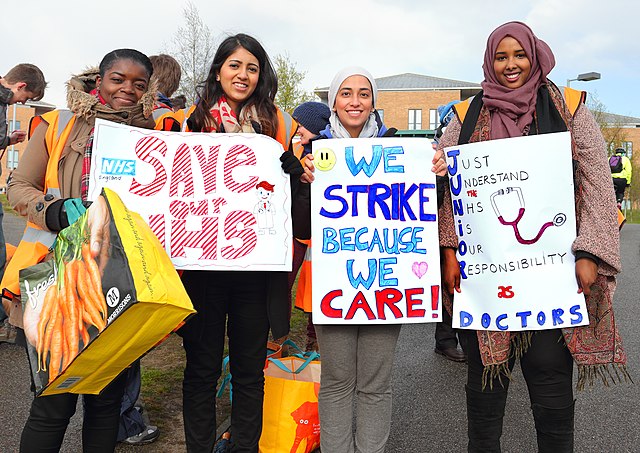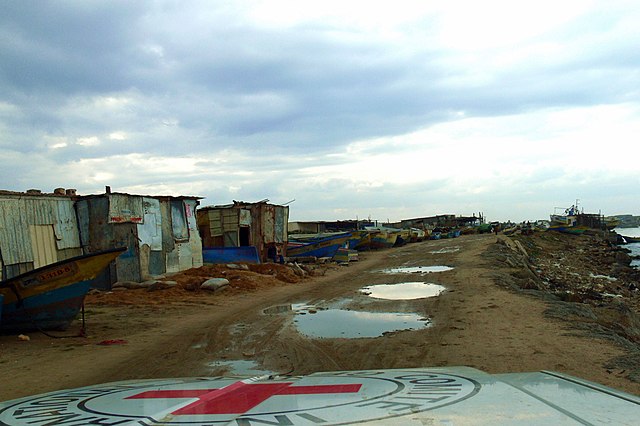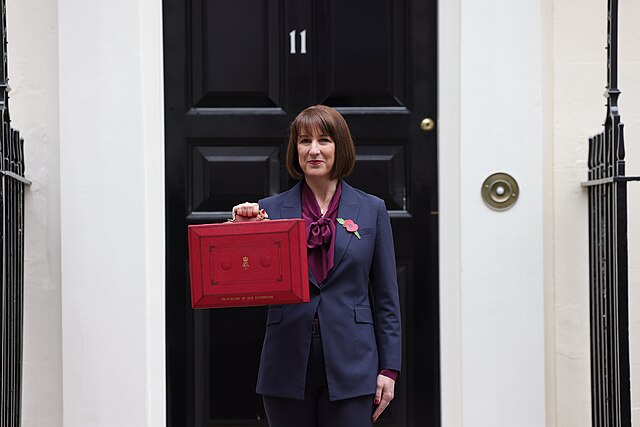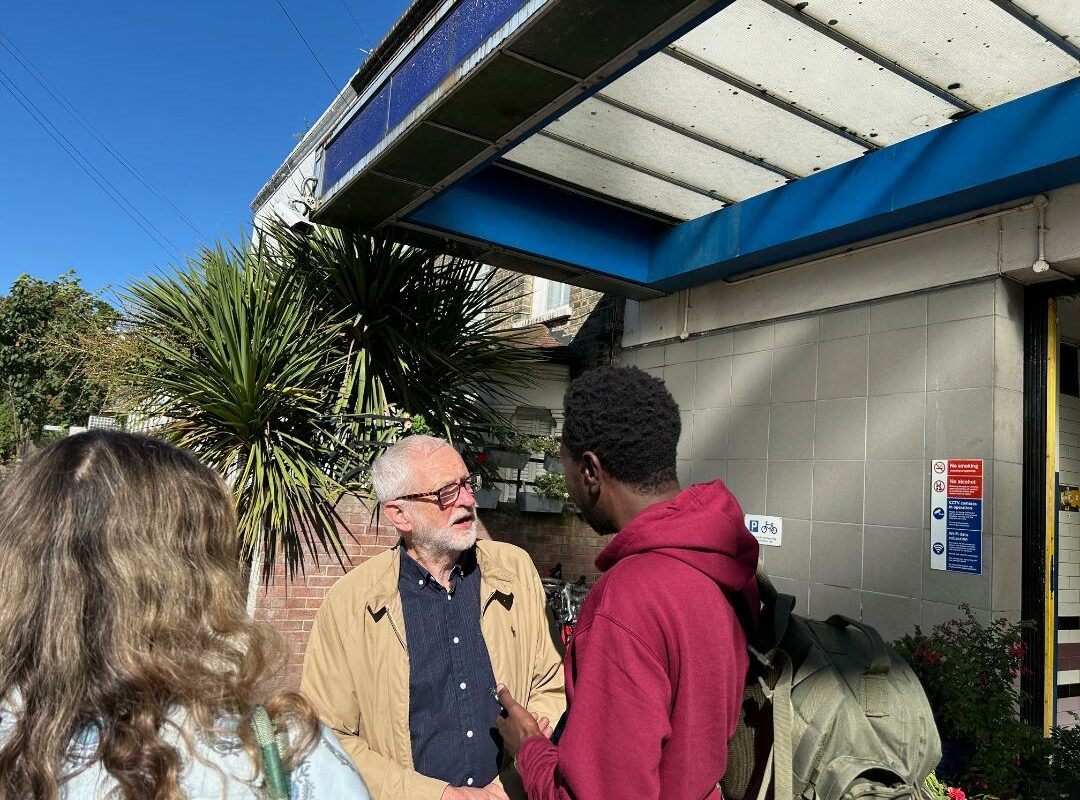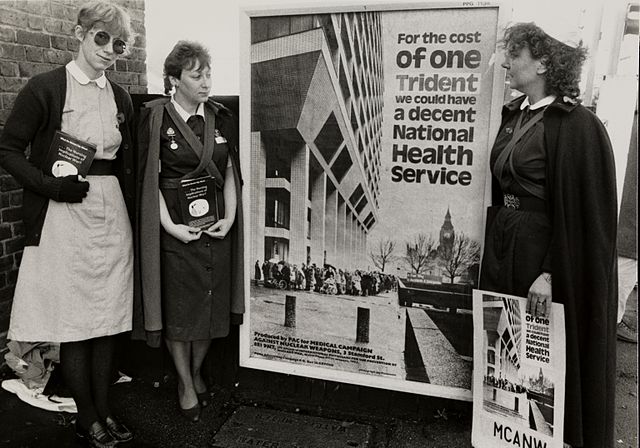Many working in the NHS as well as those who depend on its services see the current situation as being one of crisis. Lack of community care prevents patients from being discharged from hospital and beds being freed to take both acutely ill patients and those needing planned procedures. Ambulances are unable to move patients into rammed A&Es, and wait outside, unavailable to answer emergency calls. The government presents this as no more than “an extraordinarily difficult time”. Speaking to parliament, Steve Barclay, Secretary of State for Health and Social Care, blamed this on flu, Covid, strep. A infection, staff sickness and delayed discharges.
Harm to workers and harm to the community
Widespread strikes in the health sector including unprecedented action by the Royal College of Nursing are a testimony to the extreme pressure to staff from both intolerable working conditions and the cost of living crisis. Real terms wages have fallen by around 20% since the Conservative government took power. That poor staffing is bad for patients is well recognised, and is often the first reason given by those taking industrial action in explaining their decision. Instead of responding positively to pay demands and recognising considerable public support for health workers, government has turned to legislation that will make it more difficult for staff to strike, with the threat of sacking for those who do.
Vacancy rates and a long term absence of any workforce plan undermines the claim that this legislation is about a new found interest in maintaining safe services. A recent survey indicates that with the current 133,000 unfilled posts things are likely to get even worse, with four in 10 doctors and dentists saying they are likely to quit over ‘intolerable’ pressures. Meanwhile, the number of working age people claiming disability support has doubled post-pandemic. Record numbers of people are taking early retirement, most commonly because of ill health. Nine million people are now ‘economically inactive’, with 27% giving long term sickness as the reason. All of this shows that the UK cannot afford the NHS to fail.
Ambulance crisis
Ambulance Chiefs keep repeating that services are stretched beyond the limit. Patients are literally dying in the back of ambulances, while in 2021 it was estimated that up to 160,000 were coming to harm because of delays. In the same year, the West Midlands Ambulance Service acknowledged that it was causing catastrophic harm to patients. Last December, response times across England were the worst on record. One medical college president observed that pressure on the NHS was now so severe that it was breaking its ‘basic agreement’ with the public to treat the sickest in a timely way, commenting ‘the true barrier to tackling this crisis is political unwillingness; the current situation is breaking the workforce and breaking our hearts’.
Criminal inaction by government is causing huge numbers of unnecessary deaths.
In 2021, the Royal College of Emergency Medicine published an estimate of the number of deaths across the UK associated with crowding and long waiting times in Emergency Departments (ED) of 300-500/week. The authors analysed Hospital Episode Statistics and Office of National Statistics data in England. Studies elsewhere have previously shown that delay in moving patients from the ED to a ward increased the risk of death. Conversely, risk decreased when movement of patients was speeded up. Such an estimate therefore seems entirely plausible given that the ED is simply not equipped to provide ongoing treatment and levels of nursing care needed.
The study demonstrated a steady rise in death by 30 days for patients who remained in the ED for more than five hours from their time of arrival. One extra death occurred for every 82 patients delayed for more than six to eight hours. The data was published only after peer review and the methodology used in reaching the conclusions is clearly set out. Importantly, other experts agree the figure is perfectly reasonable, and may indeed be an underestimate. A repeat analysis using more recent data came up with an estimated 530 deaths a week.
While of huge potential significance, this type of study cannot absolutely prove delayed admission causes deaths, meaning the conclusions are open to challenge. Representatives of NHS England, however, cannot get away with simply stating: “It does not recognise those figures”. A more serious response is required and they should show where they think the paper is wrong and share their analysis for consideration and response. This is a process that is essential if policy decisions are to become more science based and therefore effective in terms of protecting patients.
More or less everyone but the government thinks the NHS is in crisis
When Secretary of State for Health, Jeremy Hunt liked to present himself as a champion of patient safety. Against this, campaigners point out that on his watch we find missed targets, lengthening waits, crumbling hospitals, false solutions, funding boosts that vanished under scrutiny, and blame apportioned to everyone but himself. Later becoming chair of the Commons Select Committee on Health, he concluded in a recent 2022 report that: “We now face the greatest workforce crisis in history in the NHS and in social care, with still no idea of the number of additional doctors, nurses and other professionals we actually need”, adding that this was putting patients at risk of serious harm.
The report also stated: “It is unacceptable that some NHS nurses are struggling to feed their families, pay their rent and travel to work”, suggesting they be given a pay rise to match inflation. For Hunt, now chancellor, this has been conveniently forgotten, with the Treasury being cited as the main block on progress in pay talks. Meanwhile, the House of Lords Public Services Committee opined that: “The state of emergency healthcare is a national emergency. The substantial delays that patients face when trying to access emergency health services create . . . an unprecedented clinical risk” .
Downward spiral but no credible plan
Responding to current performance statistics, the Health Foundation commented: “these figures show a gridlocked health and care system struggling to meet the needs of patients . . . in October 2022, hospital waiting lists hit a record high of 7.2 million, with nearly 411,000 waiting over a year. More than 1 in 10 people with a serious condition such as a stroke or chest pain waited over 105 minutes for an ambulance in November, while nearly 38,000 people spent more than 12 hours on trolleys in A&E. In addition, 39% of urgent cancer referrals waited longer than the target two months to receive their first treatment.
The Department of Health and Social Care commissioned a report from the King’s Fund to help it understand how this situation had arisen. The thinktank helpfully concluded that a “decade of neglect” by Conservative administrations has weakened the NHS to the point that it cannot tackle the huge backlog of care. Specifically, years of denying funding and failing to address its growing workforce crisis have left it with too few staff, too little equipment and too many outdated buildings.
It is no surprise that a Tory party in power for 13 years is reluctant to admit the NHS is in crisis as this would mean taking responsibility for the mess. The pining for a more privately funded system is neither fair nor makes economic sense. Recent promises of improvement represent only a sticking plaster. The government should reflect on the fact that the vast majority of the public still support the core principles of a public service. The NHS itself has not failed, but has been failed by politicians, and politicians deserve to pay a political price.
Dr John Puntis is co-chair of Keep Our NHS Public
